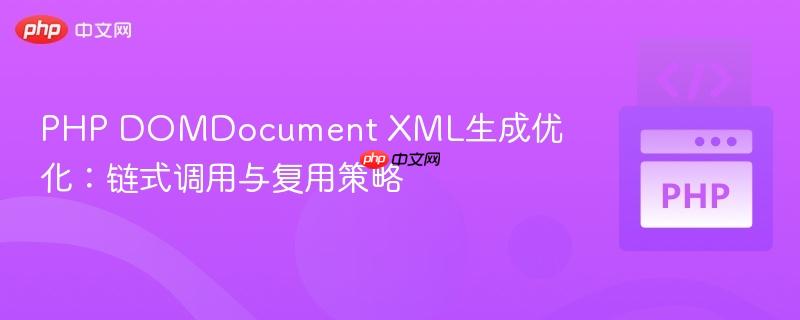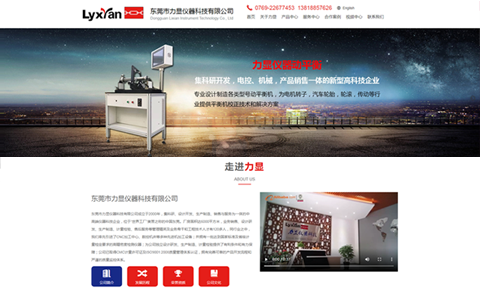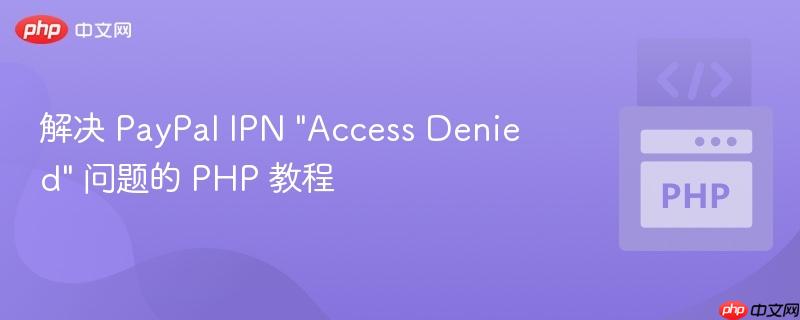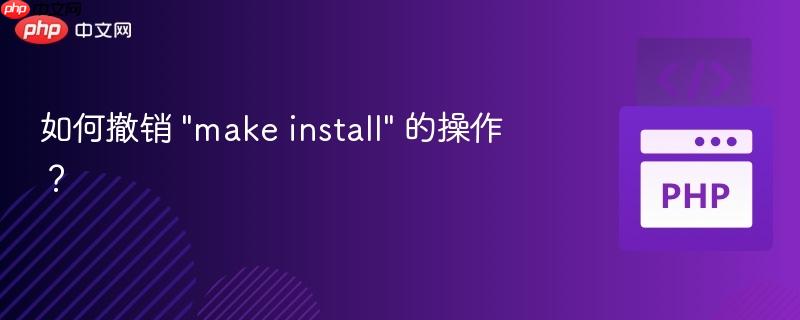
DOMdocument基础与传统问题
php的domdocument类提供了一套强大的api,用于创建、解析和操作xml文档。在使用domdocument生成xml时,通常通过createelement()创建元素,然后使用appendchild()方法将其添加到父节点。然而,当需要添加大量子节点时,连续多次调用appendchild()会导致代码冗长且难以维护,例如:
$dom = new DOMdocument();$root = $dom->createElement('Root');// 传统方式:多次调用 appendChild()$root->appendChild($product);$root->appendChild($quantity);$root->appendChild($measureUnit);$root->appendChild($lineNumber);$dom->appendChild($root);$dom->save('/some/dir/some-name.xml');登录后复制这种方式在节点数量增多时,会使得脚本变得非常长,降低了代码的可读性和维护性。为了解决这一问题,我们可以采用以下几种优化策略。
优化策略一:appendChild()的链式调用
DOMNode::appendChild()方法在执行后会返回被添加的子节点。利用这一特性,我们可以将createElement()的调用嵌套在appendChild()中,并进一步对返回的子节点进行操作,例如设置textContent,从而实现链式调用,减少代码行数。
原理说明:当$parentNode->appendChild($childNode)执行后,$childNode会被添加到$parentNode,并且整个表达式会返回$childNode。这意味着我们可以直接对这个返回的$childNode进行后续操作,如.textContent = 'value',或者再次调用appendChild()添加其自身的子节点。
代码示例:
<?php$document = new DOMdocument('1.0', 'UTF-8');// 嵌套 createElement 在 appendChild 内部,并存储根节点$document->appendChild( $root = $document->createElement('root'));// 链式调用:创建 product 节点并直接设置其文本内容$root ->appendChild($document->createElement('product')) ->textContent = 'ExampleProduct';// 链式调用:创建 description 节点,并为其添加一个子节点$root ->appendChild($document->createElement('description')) ->appendChild($document->createElement('detail')) ->textContent = 'Detailed description here.';$document->formatOutput = true; // 格式化输出,提高可读性echo $document->saveXML();?>登录后复制输出示例:
立即学习“PHP免费学习笔记(深入)”;
 AppMall应用商店
AppMall应用商店 AI应用商店,提供即时交付、按需付费的人工智能应用服务
 56 查看详情
56 查看详情 
<?xml version="1.0" encoding="UTF-8"?><root> <product>ExampleProduct</product> <description> <detail>Detailed description here.</detail> </description></root>登录后复制
这种方式显著减少了中间变量的使用,使代码更加紧凑。
优化策略二:使用DOMNode::append()批量添加 (PHP 8.0+)
从PHP 8.0版本开始,DOMNode类引入了一个新的方法append(),它允许一次性添加多个节点或字符串作为子节点。这为批量添加子节点提供了更简洁、更现代的解决方案。
功能介绍:DOMNode::append()方法可以接受任意数量的DOMNode对象或字符串作为参数,并将它们按顺序添加到当前节点的末尾。
适用场景:当需要向同一个父节点添加多个同级子节点时,append()方法比多次调用appendChild()或复杂的链式调用更加直观和高效。
代码示例:
<?php$document = new DOMdocument('1.0', 'UTF-8');$document->appendChild( $root = $document->createElement('root'));// 使用 append() 方法一次性添加多个子节点$root->append( $product = $document->createElement('product'), $quantity = $document->createElement('quantity'), $measureUnit = $document->createElement('measureUnit'));// 分别设置这些节点的文本内容$product->textContent = 'Example Product A';$quantity->textContent = '42';$measureUnit->textContent = 'cm';// 也可以直接添加文本内容$root->append( $document->createElement('comment'), 'This is a direct text comment.');$document->formatOutput = true;echo $document->saveXML();?>登录后复制输出示例:
立即学习“PHP免费学习笔记(深入)”;
 AppMall应用商店
AppMall应用商店 AI应用商店,提供即时交付、按需付费的人工智能应用服务
 56 查看详情
56 查看详情 
<?xml version="1.0" encoding="UTF-8"?><root> <product>Example Product A</product> <quantity>42</quantity> <measureUnit>cm</measureUnit> <comment/>This is a direct text comment.</root>登录后复制
注意事项: DOMNode::append()是PHP 8.0及以上版本才支持的功能。如果您的项目运行在旧版PHP上,则无法使用此方法。
优化策略三:接口化设计实现XML组件复用
对于更复杂的XML结构或需要频繁生成相同类型XML片段的场景,将XML生成逻辑封装成可复用的组件是一种非常有效的策略。通过定义一个接口,可以强制实现特定的方法来将XML片段附加到父节点,从而提高代码的模块化和可维护性。
设计理念:核心思想是创建“自描述”的XML部件。每个部件知道如何将自己及其子结构添加到给定的父DOMElement中。
XMLAppendable接口定义:
<?phpinterface XMLAppendable { public function appendTo(DOMElement $parent): void;}?>登录后复制YourXMLPart实现:假设我们有一个“产品信息”的XML片段,包含产品名称、单位和数量。我们可以创建一个类来实现XMLAppendable接口。
<?phpclass YourXMLPart implements XMLAppendable { private string $_product; private string $_unit; private int $_quantity; public function __construct(string $product, string $unit, int $quantity) { $this->_product = $product; $this->_unit = $unit; $this->_quantity = $quantity; } public function appendTo(DOMElement $parent): void { $document = $parent->ownerdocument; // 获取所属的 DOMdocument 实例 // 使用链式调用创建并设置子节点 $parent ->appendChild($document->createElement('product')) ->textContent = $this->_product; $parent ->appendChild($document->createElement('measureUnit')) ->textContent = $this->_unit; $parent ->appendChild($document->createElement('quantity')) ->textContent = $this->_quantity; }}?>登录后复制使用示例:
<?php// ... (XMLAppendable 接口和 YourXMLPart 类的定义) ...$document = new DOMdocument('1.0', 'UTF-8');$document->appendChild( $root = $document->createElement('root'));// 创建一个产品XML部件实例$part = new YourXMLPart('Example Item B', 'kg', 10);// 将该部件附加到根节点$part->appendTo($root);// 可以创建另一个产品实例$anotherPart = new YourXMLPart('Example Item C', 'piece', 5);$anotherPart->appendTo($root);$document->formatOutput = true;echo $document->saveXML();?>登录后复制输出示例:
立即学习“PHP免费学习笔记(深入)”;
 AppMall应用商店
AppMall应用商店 AI应用商店,提供即时交付、按需付费的人工智能应用服务
 56 查看详情
56 查看详情 
<?xml version="1.0" encoding="UTF-8"?><root> <product>Example Item B</product> <measureUnit>kg</measureUnit> <quantity>10</quantity> <product>Example Item C</product> <measureUnit>piece</measureUnit> <quantity>5</quantity></root>登录后复制
优势分析:
模块化: 将复杂的XML片段生成逻辑封装在独立的类中,提高了代码的组织性。复用性: 相同的XML结构可以轻松地在不同地方复用,只需创建类的实例并调用appendTo()。可维护性: 当XML结构需要修改时,只需修改对应的类,而无需修改所有生成该结构的代码。可读性: 主逻辑代码变得更简洁,只需关注如何组合这些XML部件。注意事项与最佳实践
$document->formatOutput = true;: 在开发和调试阶段,设置此属性为true可以使生成的XML带有缩进和换行,提高可读性。在生产环境中,如果对文件大小有严格要求,可以考虑关闭此选项以生成更紧凑的XML。错误处理: 在实际应用中,XML生成过程中可能会遇到各种错误(例如无效的节点名、编码问题等)。虽然DOMdocument在某些情况下会抛出DOMException,但在更复杂的场景中,应考虑加入适当的try-catch块或验证逻辑来确保XML的有效性。选择合适的策略:对于少量子节点或简单的链式操作,链式调用appendChild()是一个简洁的选择。如果项目使用PHP 8.0+且需要向同一父节点添加多个同级子节点,DOMNode::append()是最推荐的方式。对于复杂、重复或需要高度抽象的XML片段,接口化设计(如XMLAppendable)提供了最佳的结构化和复用性。编码: 始终在DOMdocument构造函数中指定编码,例如new DOMdocument('1.0', 'UTF-8'),以避免编码问题。总结
通过本文介绍的三种优化策略——appendChild()的链式调用、PHP 8.0+的DOMNode::append()方法以及接口化设计实现XML组件复用——开发者可以显著提升PHP DOMdocument生成XML代码的效率、可读性和可维护性。根据具体的项目需求和PHP版本,选择最合适的策略,将有助于构建更健壮、更易于管理的XML生成逻辑。
以上就是PHP DOMdocument XML生成优化:链式调用与复用策略的详细内容,更多请关注php中文网其它相关文章!












